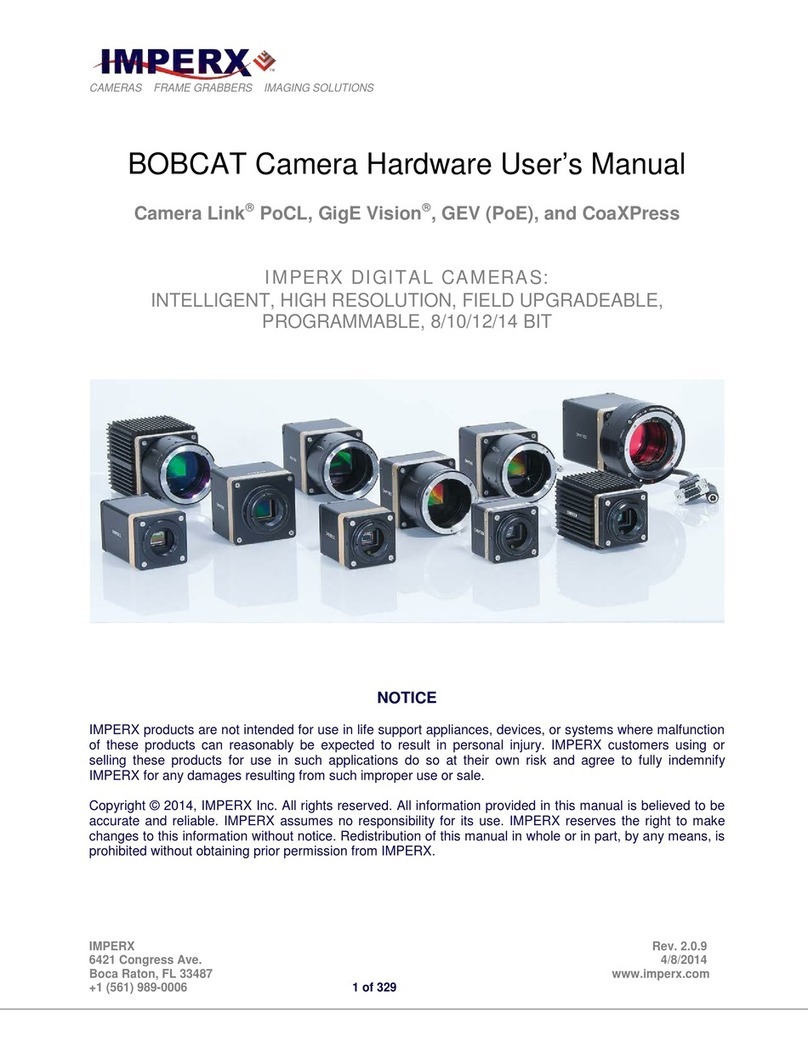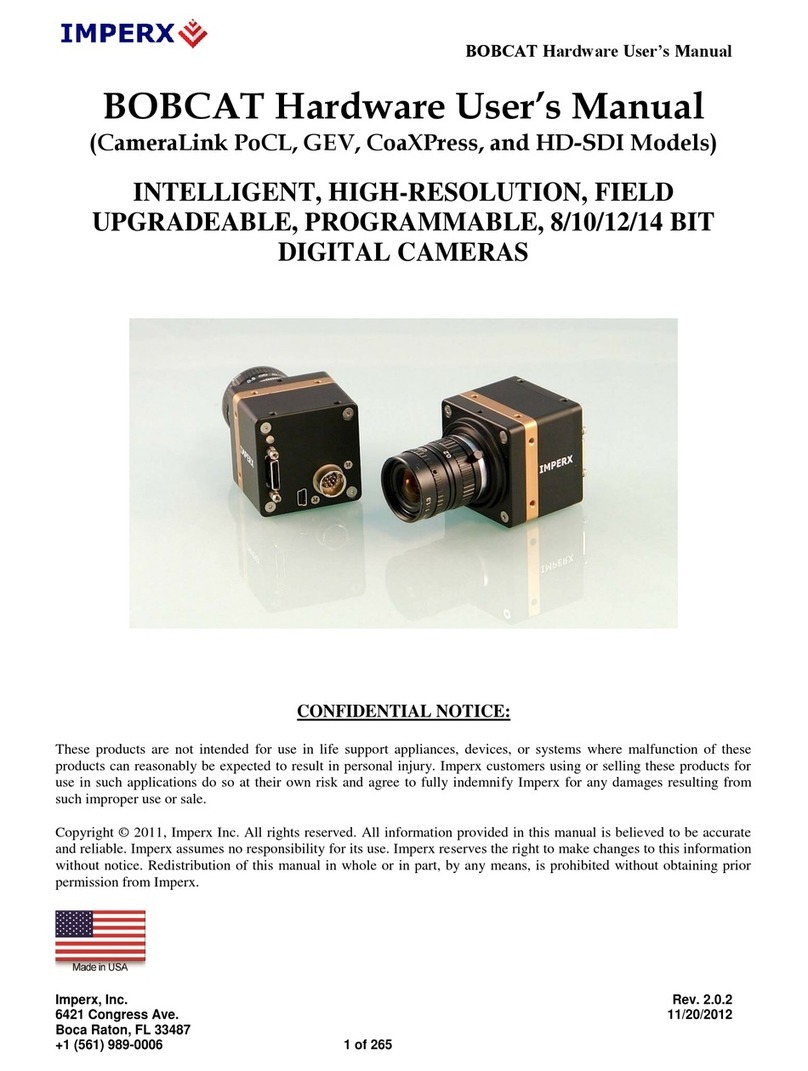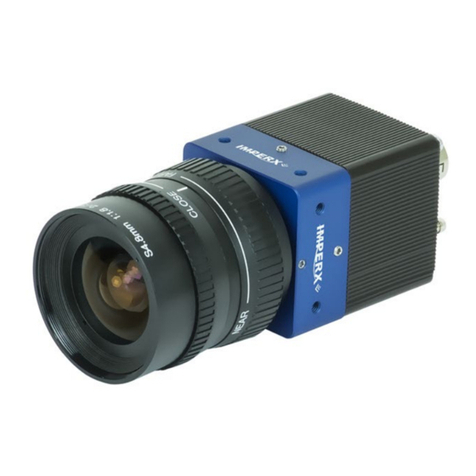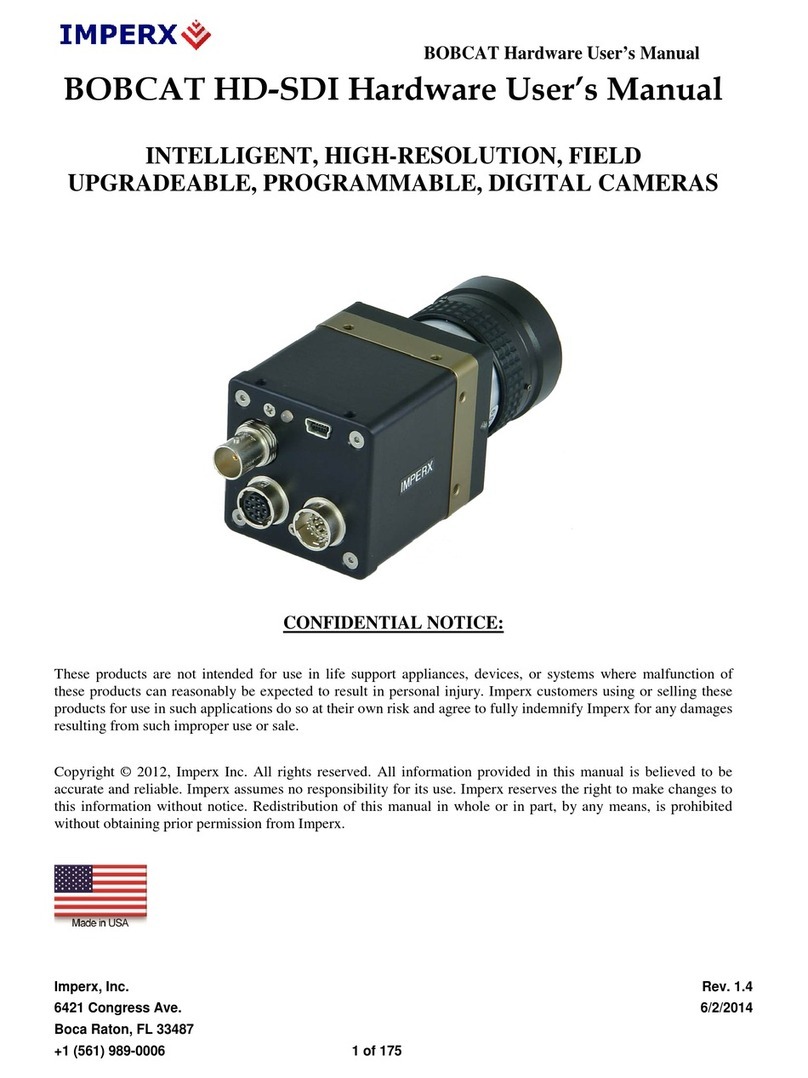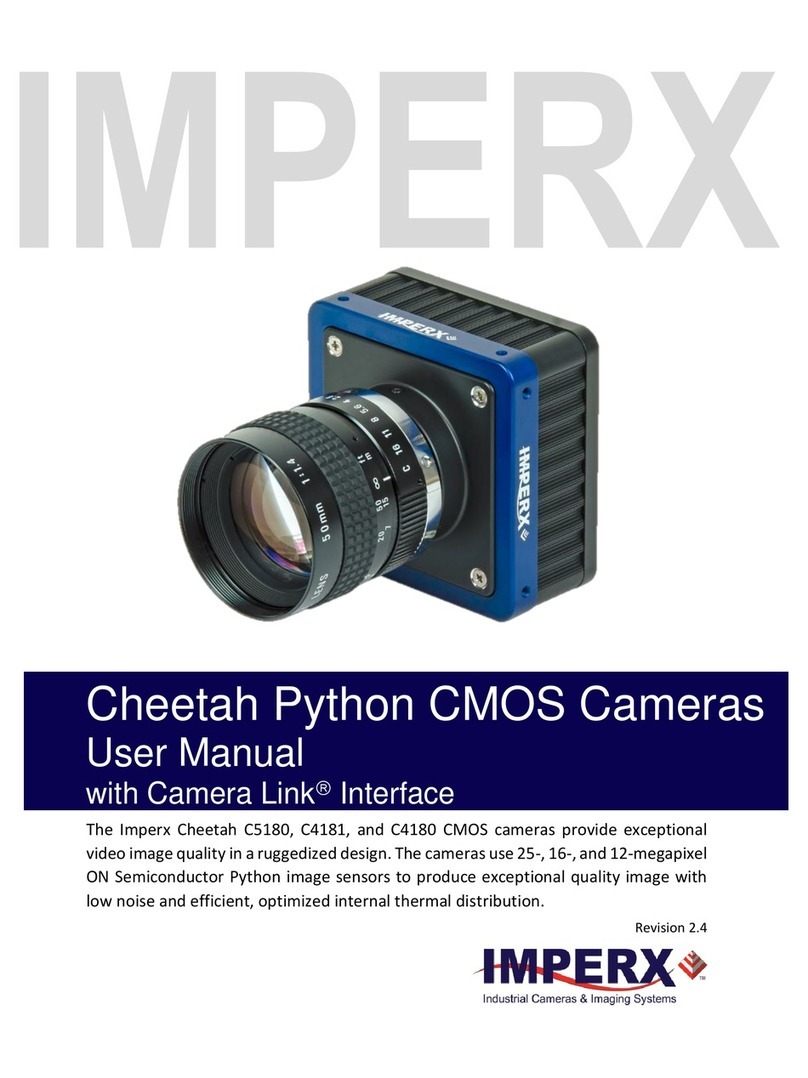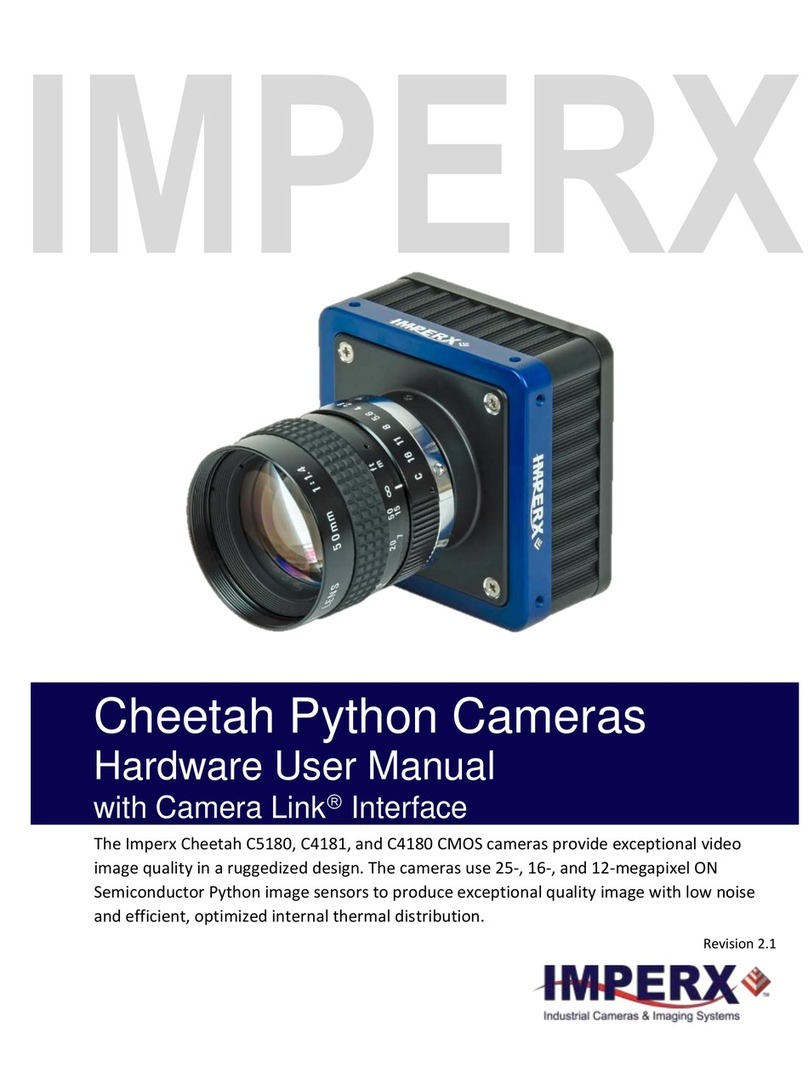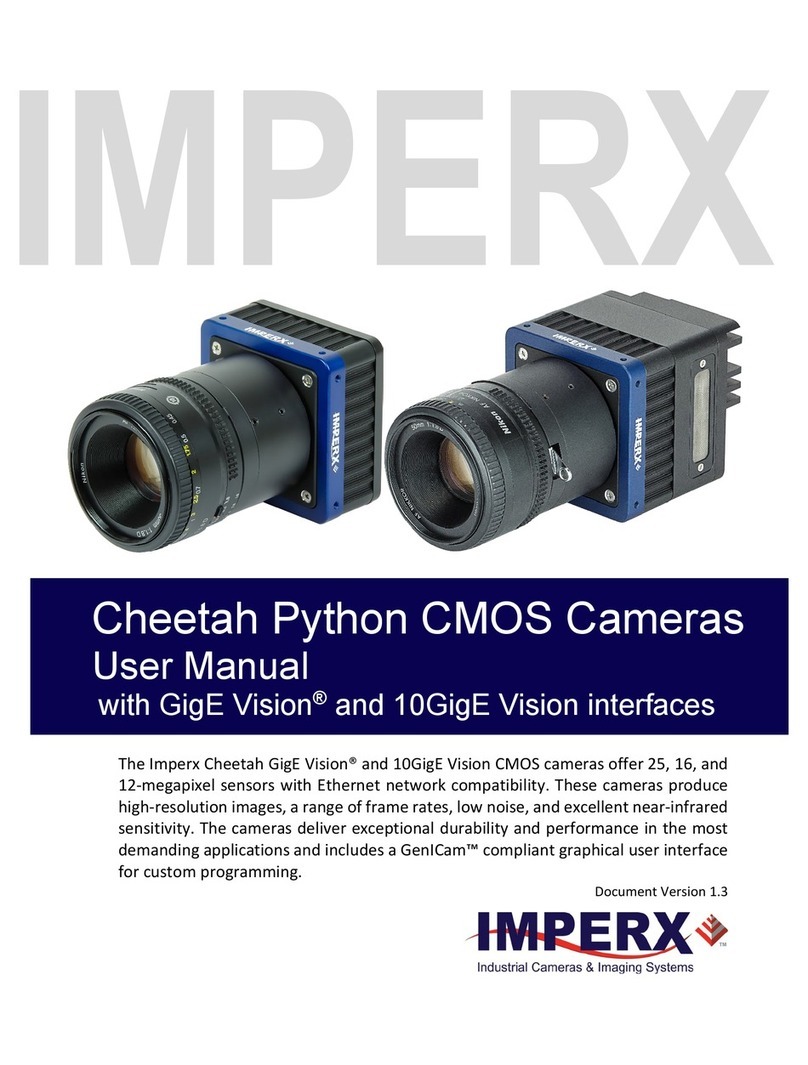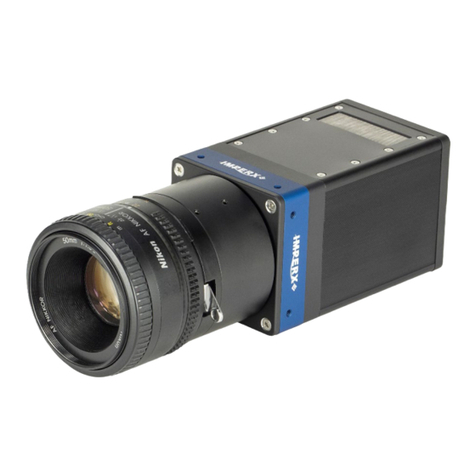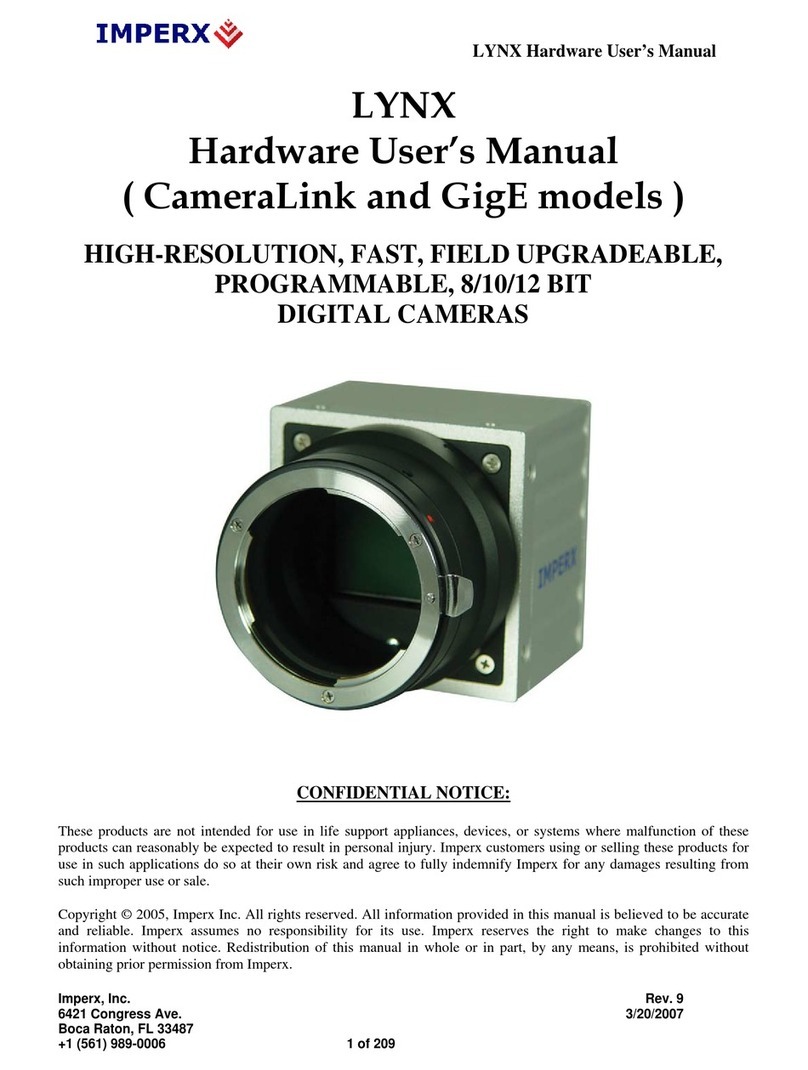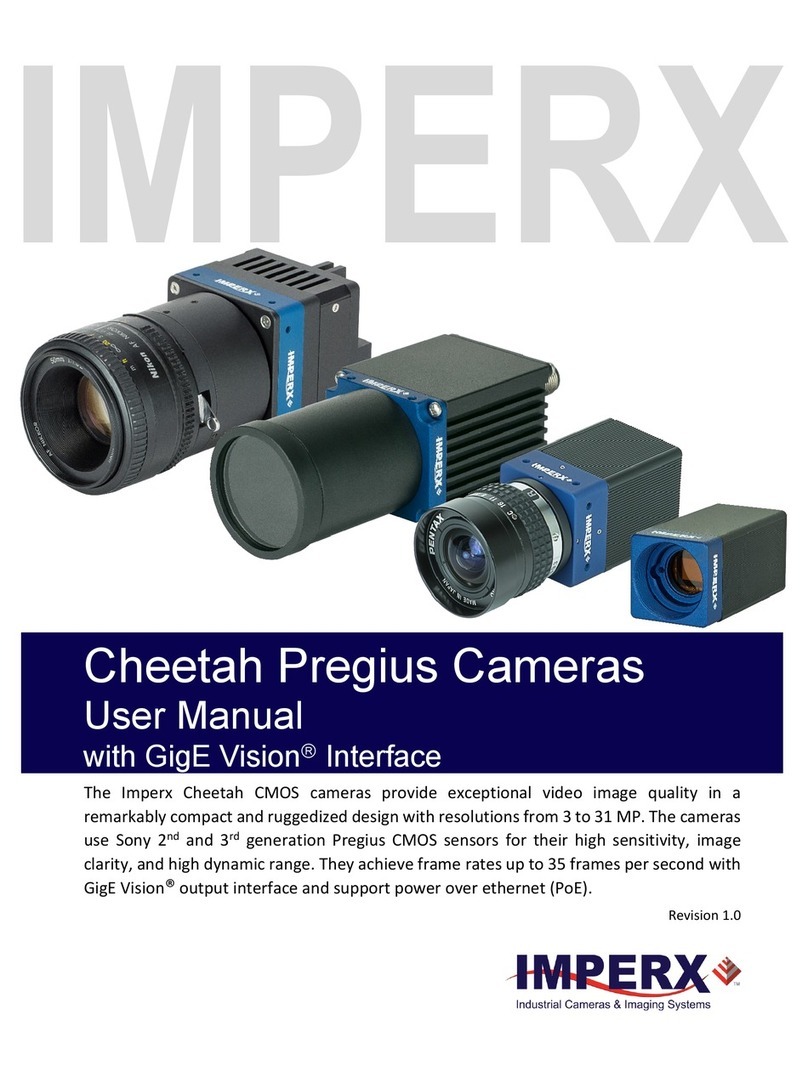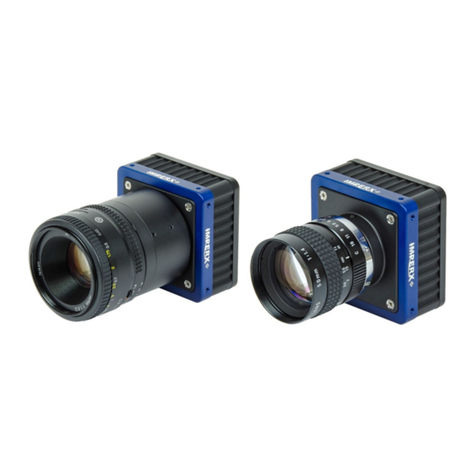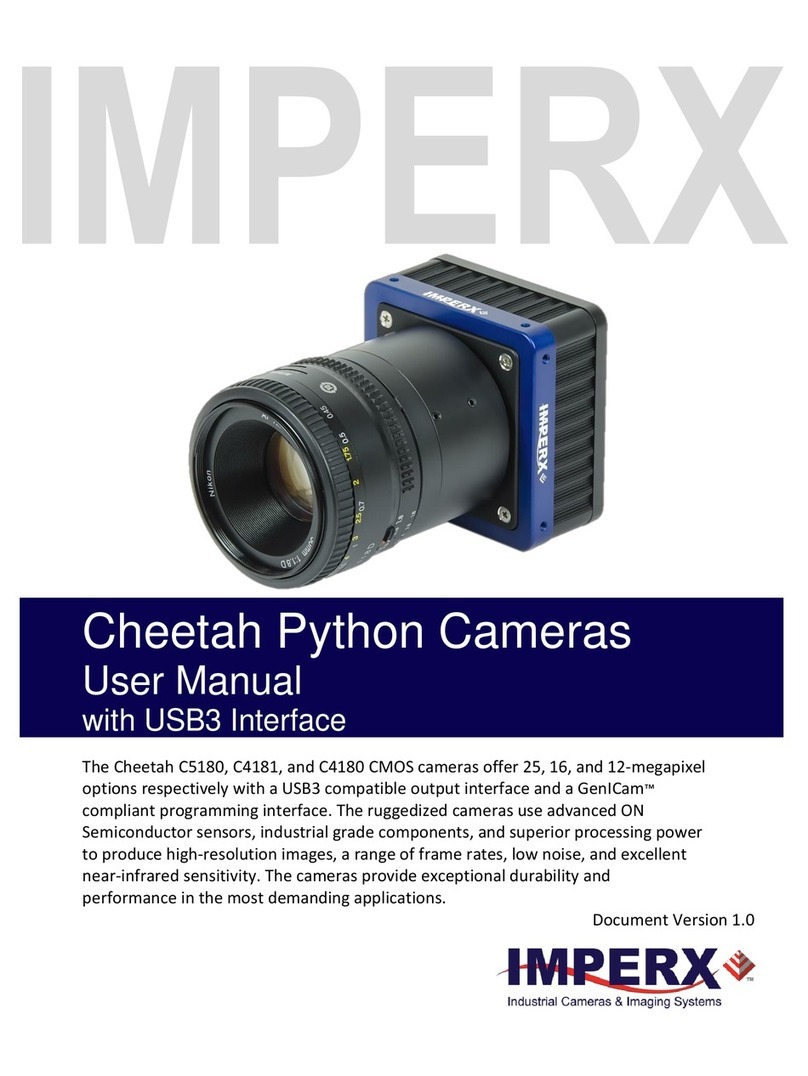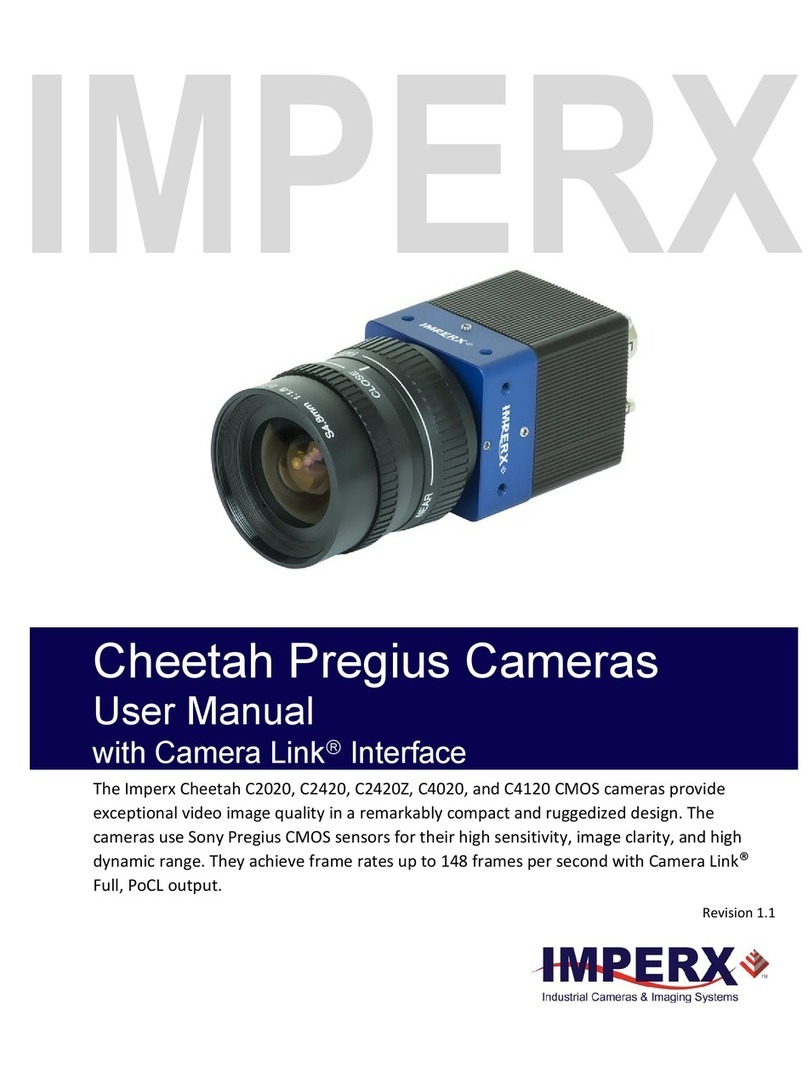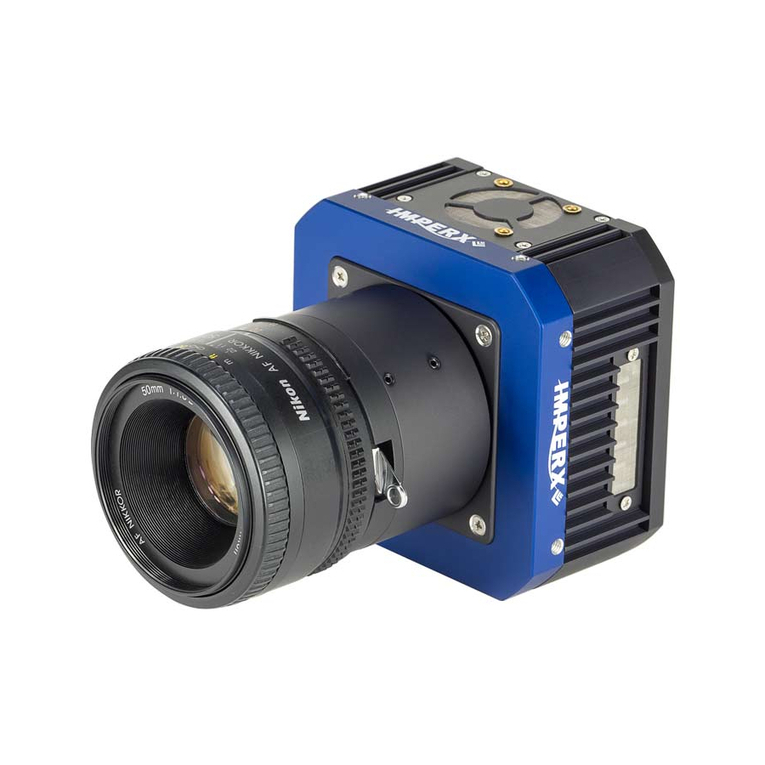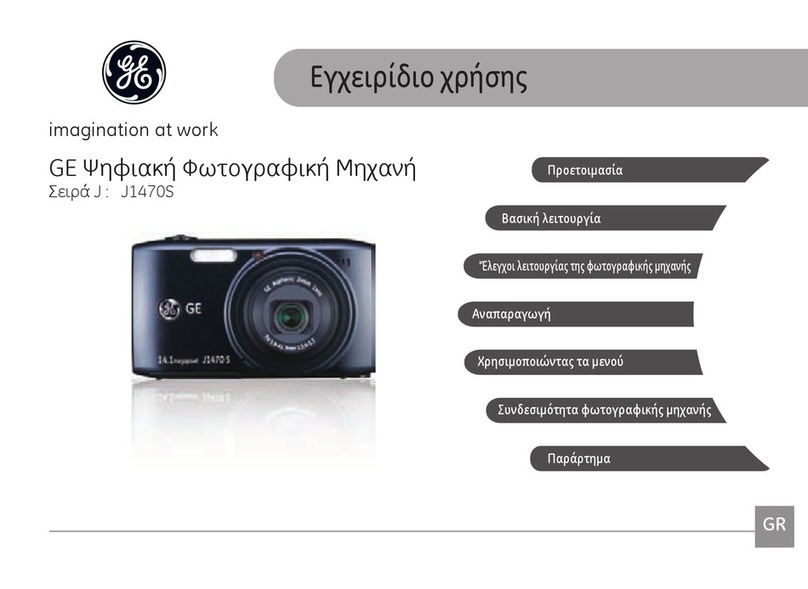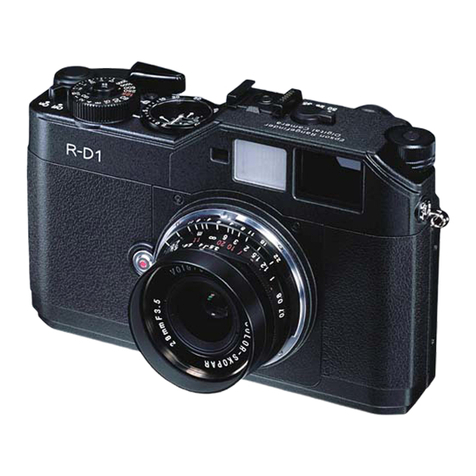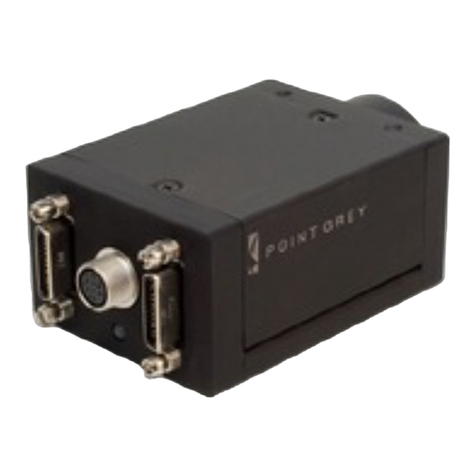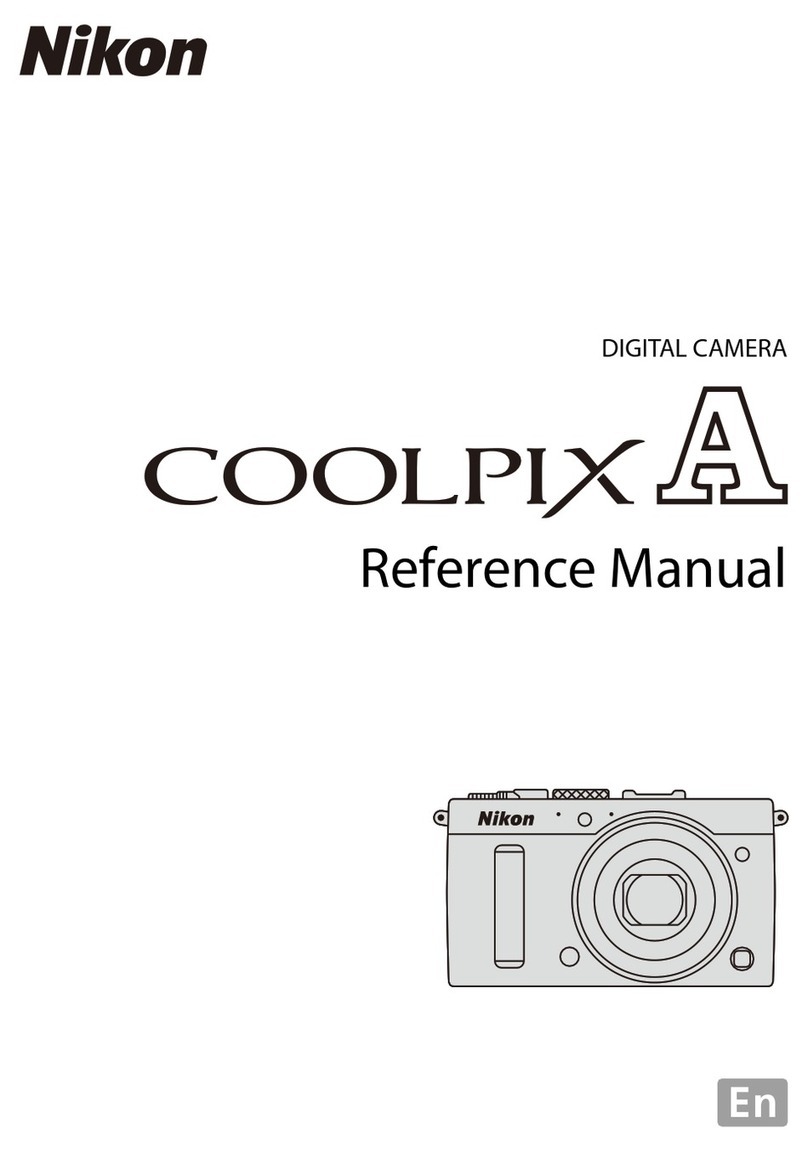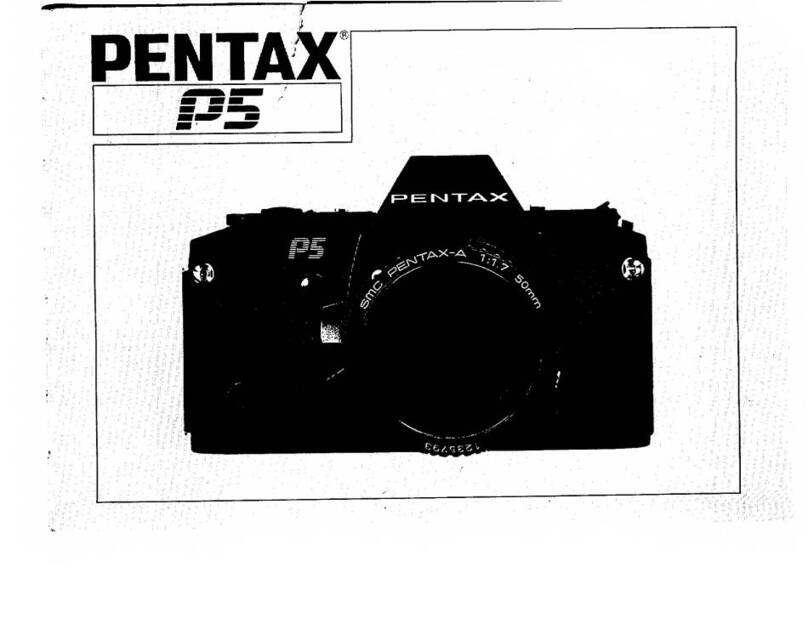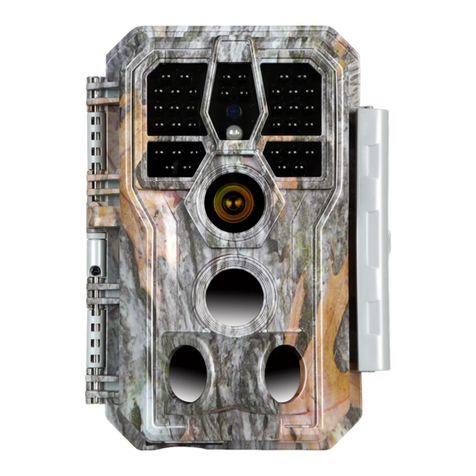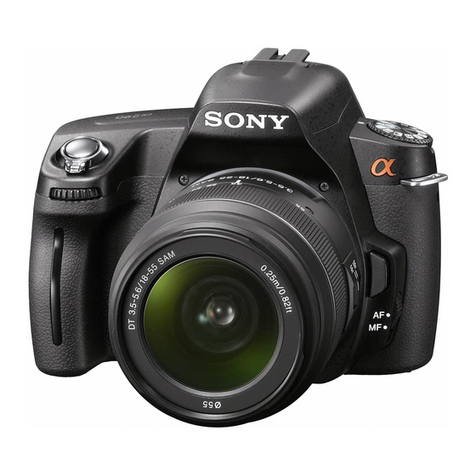
LYNX Manual RA02
www.imperx.com
3.7.1 Get Manufacturing Data (‘gmd’) _____________________________________ 95
3.7.2 Get Assembly Number (‘gan’)_______________________________________ 95
3.7.3 Get Model Number (‘gmn’) _________________________________________ 95
3.7.4 Get Firmware Version (‘gfv’)________________________________________ 95
3.7.5 Get Software Version (‘gsv’) ________________________________________ 96
3.8 Command Description _______________________________________________ 97
3.8.1 Horizontal Window_______________________________________________ 97
3.8.1.1 Set Horizontal Window (‘shw’)_________________________________ 97
3.8.1.2 Get Horizontal Window (‘ghw’)________________________________ 97
3.8.2 Vertical Window_________________________________________________ 98
3.8.2.1 Set Vertical Window (‘svw’)___________________________________ 98
3.8.2.2 Get Vertical Window (‘gvw’)___________________________________ 98
3.8.3 Shutter Time ____________________________________________________ 99
3.8.3.1 Set Shutter Time (‘sst’)_______________________________________ 99
3.8.3.2 Get Shutter Time (‘gst’)______________________________________ 99
3.8.4 Long Integration ________________________________________________ 100
3.8.4.1 Set Long Integration (‘sli’)___________________________________ 100
3.8.4.2 Get Long Integration (‘gli’)___________________________________ 100
3.8.5 Strobe Position _________________________________________________ 101
3.8.5.1 Set Strobe Position (‘ssp’)___________________________________ 101
3.8.5.2 Get Strobe Position (‘gsp’)___________________________________ 101
3.8.6 Analog Gain ___________________________________________________ 102
3.8.6.1 Set Analog Gain (‘sag’)______________________________________ 102
3.8.6.2 Get Analog Gain (‘gag’)_____________________________________ 102
3.8.7 Analog Offset __________________________________________________ 103
3.8.7.1 Set Analog Offset (‘sao’)_____________________________________ 103
3.8.7.2 Get Analog Offset (‘gao’)____________________________________ 103
3.8.8 Dual Tap mode _________________________________________________ 104
3.8.8.1 Set Dual Mode (‘sdm’)_______________________________________ 104
3.8.8.2 Get Dual Mode (‘gdm’)______________________________________ 104
3.8.9 Bit Depth______________________________________________________ 105
3.8.9.1 Set Bit Depth (‘sbd’)________________________________________ 105
3.8.9.2 Get Bit Depth (‘gbd’)________________________________________ 105
3.8.10 Lookup Table Operation__________________________________________ 106
3.8.10.1 Set Lookup Table (‘slt’)______________________________________ 106
3.8.10.2 Get Lookup Table (‘glt’)_____________________________________ 106
3.8.10.3 Get Lookup Header (‘glh’)___________________________________ 106
3.8.11 Noise Correction processing_______________________________________ 107
3.8.11.1 Set Noise Correction (‘snc’)__________________________________ 107
3.8.11.2 Get Noise Correction (‘gnc’)__________________________________ 107
3.8.12 Horizontal mode ________________________________________________ 108
3.8.12.1 Set Horizontal Mode (‘shm’)__________________________________ 108
3.8.12.2 Get Horizontal Mode (‘ghm’)_________________________________ 108
3.8.13 Vertical Mode __________________________________________________ 109
3.8.13.1 Set Vertical Mode (‘svm’)____________________________________ 109
3.8.13.2 Get Vertical Mode (‘gvm’)____________________________________ 109
5of 154 5/6/2005
